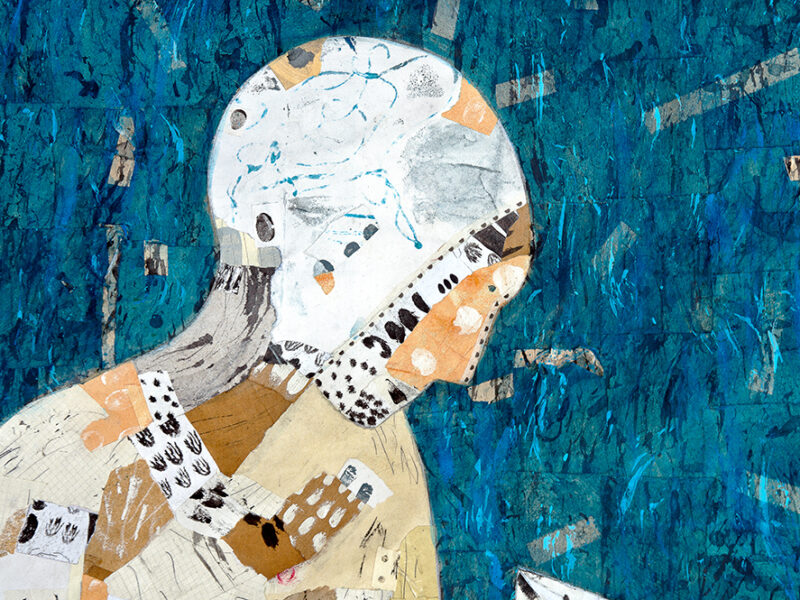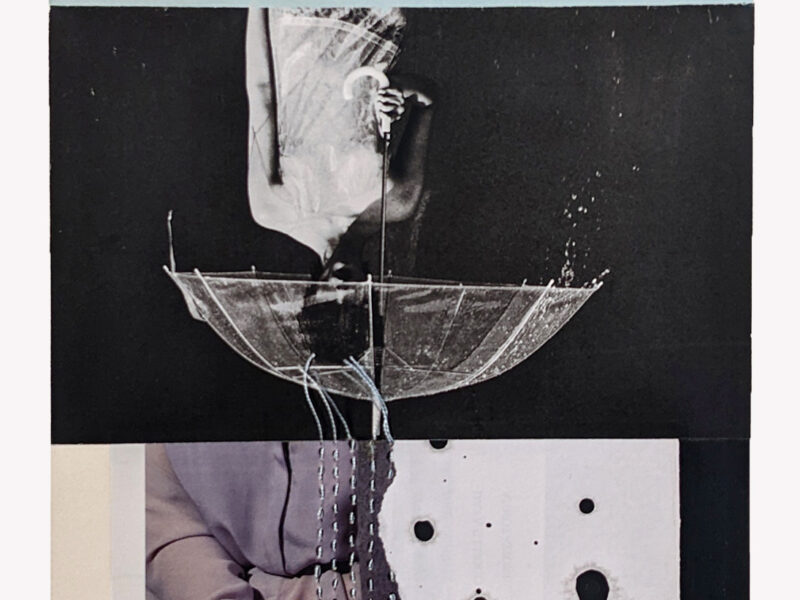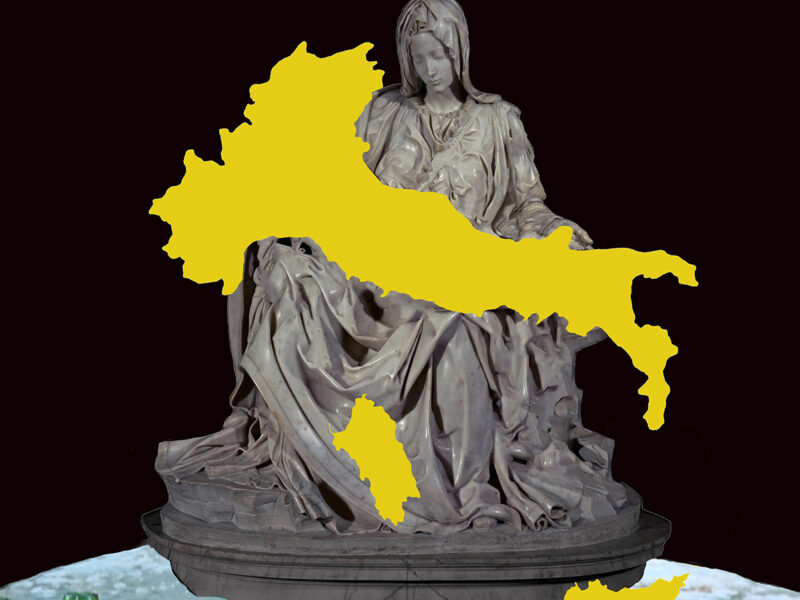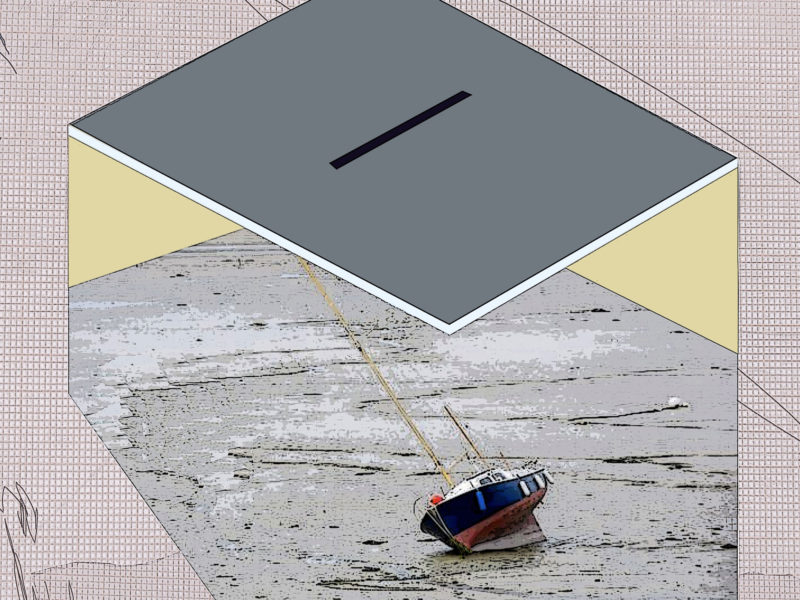Interview | David Mondedeu
In your works from “Fugue of the Blackbird” up to “One side will have to go”, the spectator / viewer participates in a narration. A narrative that becomes more and more subtle over time, gets naked without even removing the veil, naked in a way that does not cover or discover.
I feel art is the balance of expressing your most profound emotions while retaining a certain mystery because mystery is a kind of agnosticism. The process of how a work of art is carried out is in essence it´s meaning. A Rothko painting is painted in a very multi-layered and subtle way because it mirrors the spirituality he´s trying to express. In one of Bach´s last fugues, you can feel every note and this adds to the depth of what he´s trying to express. The silence between those notes are essential. I´m after a kind of stillness, silence, calmness, and clarity.
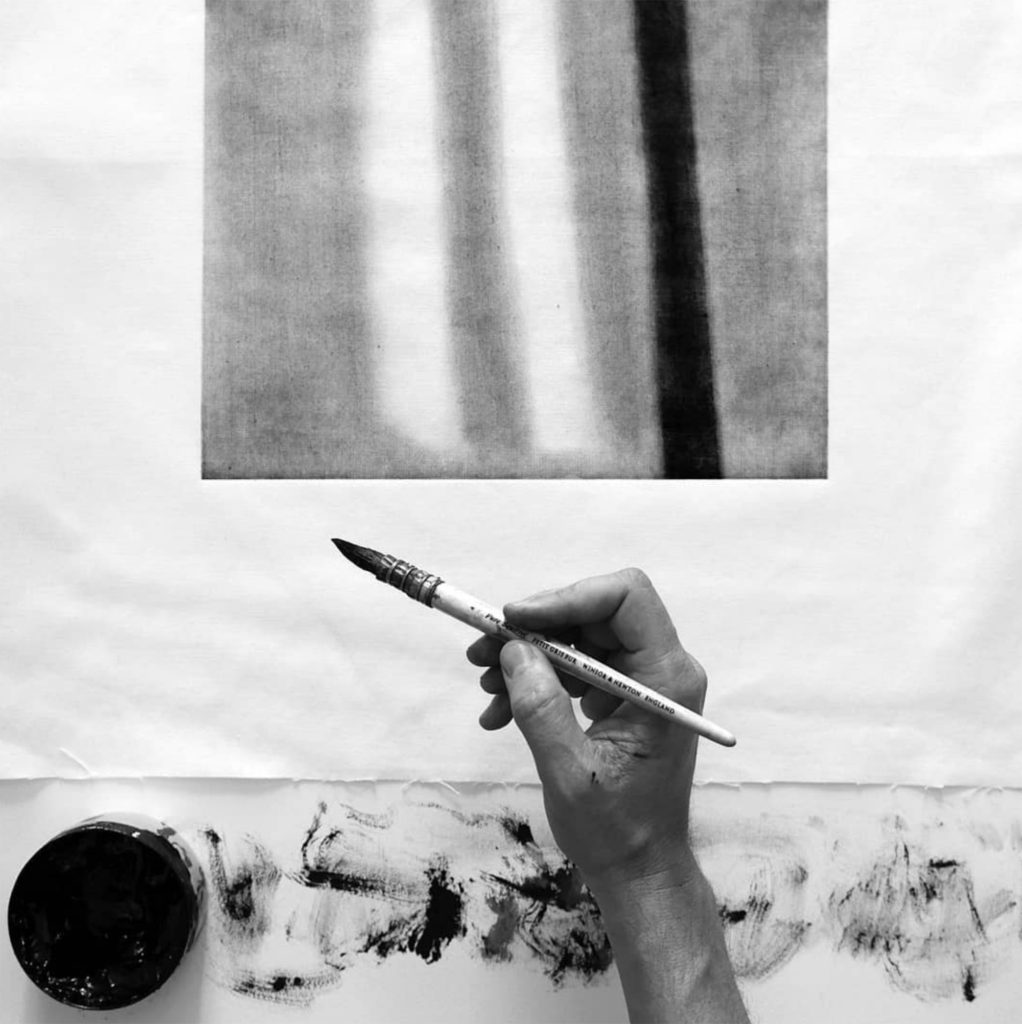
Narrating is inventing. And inventing is making the invention an event. From “One side will have to go” on it seems to me that this event recedes to the advantage of something transparent, an “almost nothing” as Jankélévitch said.
I´m just expressing emotions. I´m constantly trying to find a more direct way of expressing these emotions by getting rid of all the unnecessary layers. I agree with you and feel that this “almost nothing” is part of the journey, but I feel it´s necessary to retain the same emotional intensity.
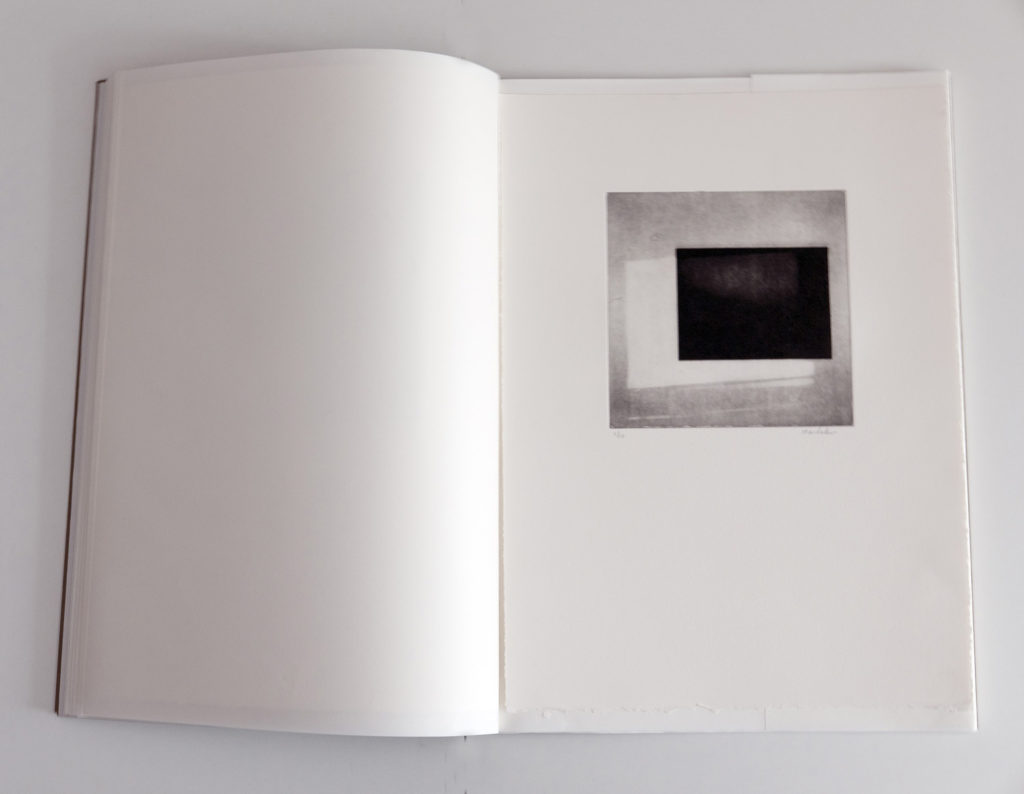
It reminds me the lines of Wright’s poetry “… help me to lie low and leave out, / remind me that vision is singular, that excess / is regress, that more than enough is too much, that / compression is all.” (Meditation on Song and Structure)
Yes, I believe it´s important to be as profound as possible with only that which is necessary, but that’s also true about life in general.
Knowing how to leave and knowing what it means to leave is one of the most beautiful, courageous and most indispensable things that I know and it makes a whole with abandonment, with gift and forgiveness…
Yes, I feel that what you leave out is just as important as what you put in. I also think it´s courageous to be direct, naked and honest but it takes time. If one is honest with oneself and can empathize with one´s own shortcomings, then forgiveness is just an extension of that. The abandonment that I can see in my art is this notion of getting rid of all the extraneous layers to be as honest as possible with myself and thus with others.

Thinking about the theme of “leaving”, of disappearing, two legendary figures come to my mind: Masaccio with his Cappella Brancacci and Sanmartino with his Cristo velato…
The theme of “leaving” as you say, is part of our emotional journey. It´s our very own past, our childhood. It´s only when we are able to come to terms with our past that we are able to move forward and grow. It´s a long process and it never truly stops. Faulkner was right about the past never dying.
And yes, there is a sense of disappearing, of abandonment, of shedding another layer of skin. I think we all go through this transition, this pilgrimage. All art, as in Masaccio´s Cappella Brancacci, expresses the emotional weight we all carry and the weight we free ourselves from, the burden and joy of being human and the many stages that we must all go through. Art is a continuum of who we are, have been and will be. In my latest paintings, the one brushstroke is a kind of life line, trying to reveal-express all of this in contrast to the light.
The veil in San Martino´s Cristo Velato lies somewhere between life and death, between the physical body and the spiritual. Yes, I feel that my work is also a part of this emotional territory.
Now I would like to stop on the light… And thinking about this theme of light, I try to put two painters in frontal competition, two opposing visions: Morandi – Hopper. And each of them and l let them speak with their famous phrases: “My paintings are a luminous elegy” and by Hopper: “I just want to paint the light”.
I feel that Morandi´s light is both celestial and human. It´s quiet, subtle and profound. The many tones, nuances of grey he was able to achieve seem to reflect his deep understanding of what it means to be human because it´s in the greys, where most of life happens and thus grey is the color of acceptance in the deepest sense. The painting, “Rooms by the Sea”, is the culmination of Hopper´s art because light was always the content of his paintings. I´m interested in how Hopper portrayed his inner world as seen in the room and the refracted light in contrast to the sea, the outer world. There´s this interplay between life and death but we feel this at an emotional level. I think it was Rothko who said that the history of art is the history of light. Yes, I think light and the absence of light is part of the history of art from Vermeer to Ryman to Agnes Martin, to name a few.
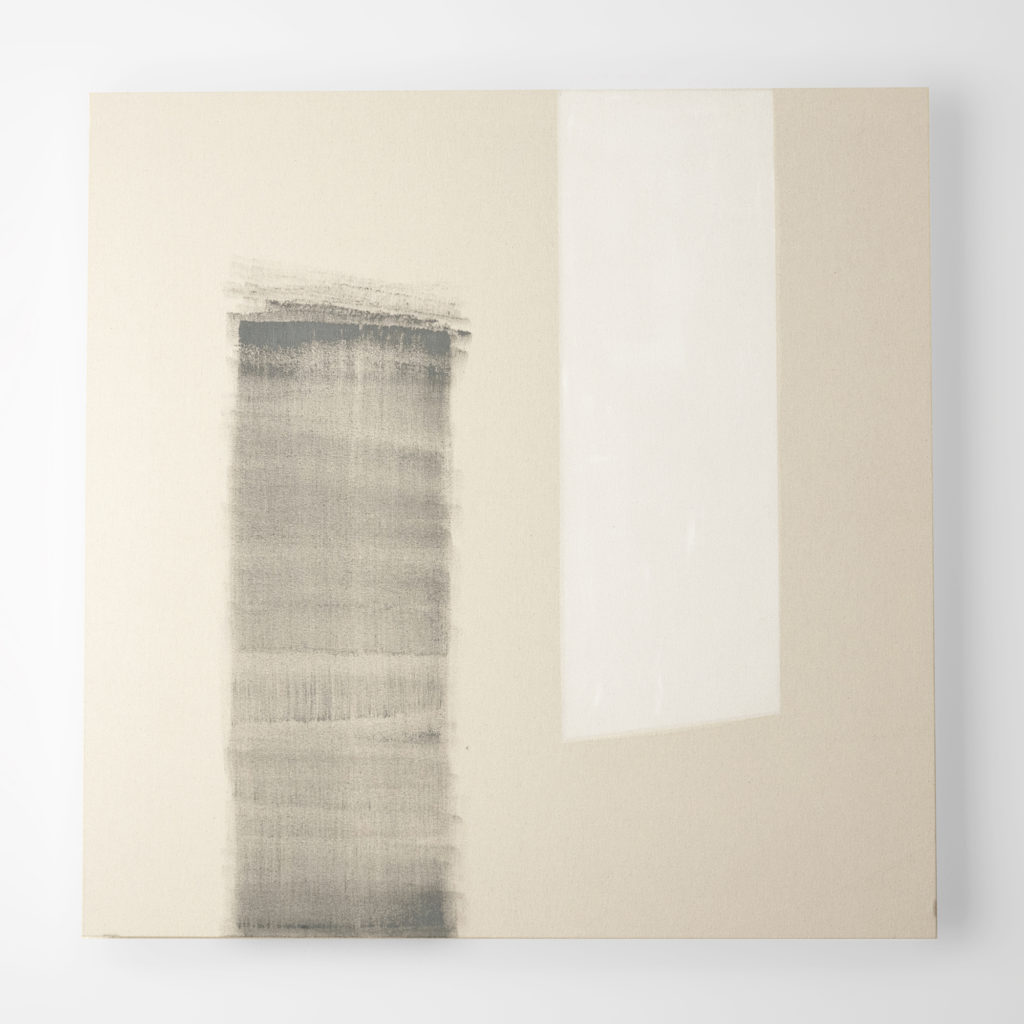
To create with light, to create through light, even before being a poetic gesture, it seems to me the intent of an excavation operation or even better: to find what lies totally between, the “enter-deux” mentioned by Braque …
Yes, the in between is of utmost importance. It´s the silence between two musical notes and in this silence, there are many possible interpretations which I like to leave open for the viewer and even myself. So instead of silence, it might be a vast space, a landscape, life itself or what Hamlet says “the undiscovere’d country, from whose bourn no traveller returns”.
Nonetheless, I feel that it´s an emotional territory, where I imagine we all project our own feelings and experiences. That´s why I like to leave this space bare, unpainted where all you can see is the raw linen or cotton duck. But I´m constantly changing as a person and thus as an artist, so I imagine this space will change accordingly.
It is as if what you find, what is on paper or on canvas, is always straddling two things, two ends that are detached from each other (with something in the middle).
In my work, up until now there´s almost always been two elements: light and it´s counterpart, for lack of a better word. But to me, what lies between these two, the space in between is just as important as I mentioned before. These two elements might seem detached but in a sense there are like two arteries that lead to the heart. I feel that if I only expressed light, then I´d be missing the many other aspects of life.
Let’s talk about what remains, what is there, before our eyes, this strange presence …
Hopefully, what remains is an awareness of all the emotions that makes us human, the good and the bad. Carl Jung said, “To confront a person with his shadow is to show him his own light.” I think there´s a sense of resolution, of peace, of understanding, that´s all I can try to do.
Wallace Stevens wrote: “The world is presence and not force./ Presence is not mind./ Presence is Kinder-Scenen./ It fills the being before the mind can think./ The effect of the object is beyond the mind’s/ extremest pinch and, easily, as in/ a sudden color on the sea. But it is not/ that big-brushed green. Or in a tragic mode,/ as at the moment of the year when, tick,/ autumn howls upon half-naked summer./ (…) Presence is not the woman, come upon,/ not yet accustomed, yet, at sight, humane/ to most incredible depths. (…). (Saint John and the back-ache)
Yes, I think our emotional response to a work is what´s important. A Robert Ryman painting makes you feel differently than a painting by Howard Hodgkin. When it´s all said and done, I´m trying to express complex emotions and hopefully these emotions are communicated and felt by the viewer. Wallace Stevens also said “ Twenty men crossing a bridge into a village, are twenty men crossing twenty bridges into twenty villages.” So the viewer brings their own life experiences into the art. The history of art is the history of our emotions. The paintings by Pollock and Rothko express what seem to be two different experiences and feelings of the world. You see the same emotions in Goya/Bacon and Turner/Ryman. So as human beings we have these two worlds inside of us. They are constantly in conflict, but as in so many conflicts, our awareness is part of the resolution.
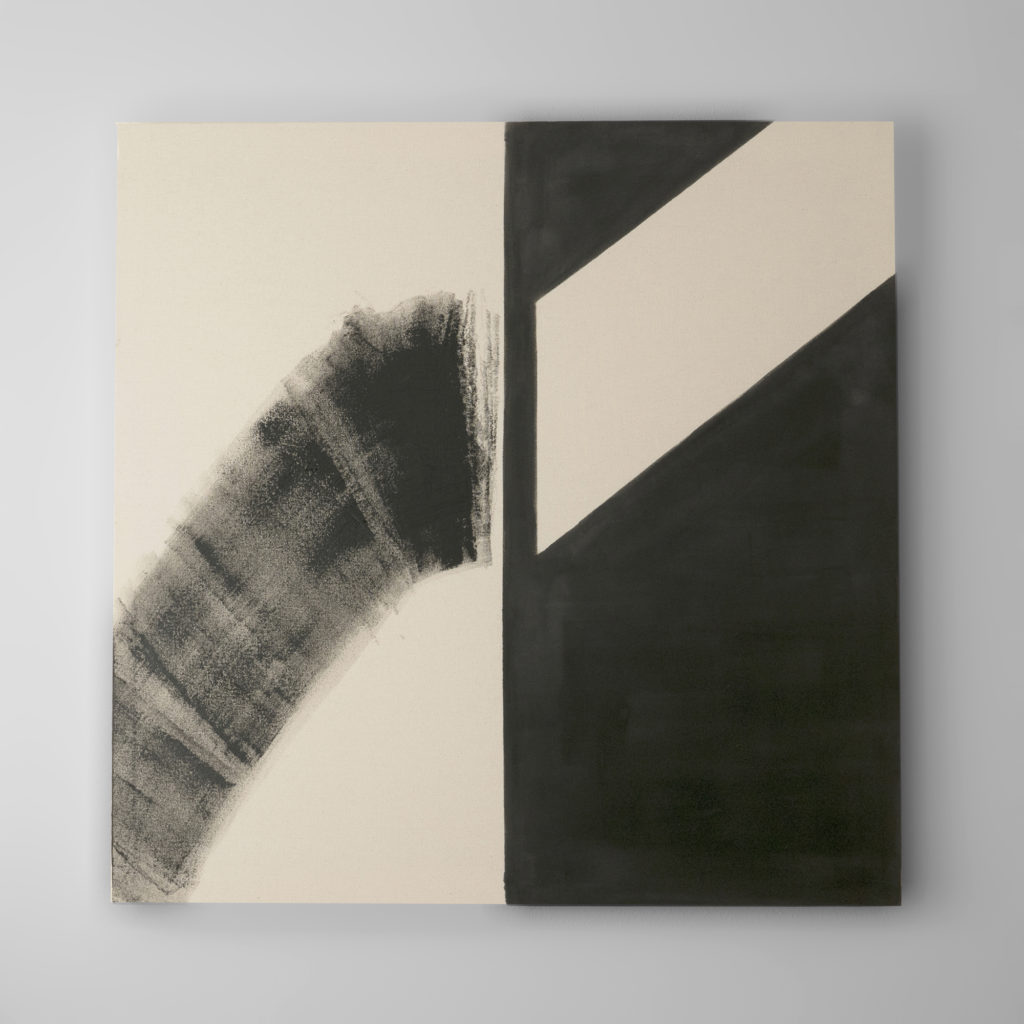
Perhaps what is in between, what is in the middle, this subtle and imperceptible thing, is it possible that it finds a position in the category of scrap/discard, of what remains perpetually on the threshold?
In a way, I think this in between is a feeling of peace like a calm, grey ocean between the sun and a dark shore. But I as I mentioned before, we change and so the space we inhabit also changes.
François Jullien wrote: “The discard, this will that erases the difference in favor of promoting what is “other”, what is “in between”, is fruitful because it is exploratory, adventurous …”
Yes, I agree that this “in between” is exploratory and thus this where the viewer can feel whatever they want to feel.
I try to turn this concept upside down and make the two far ends of the “between” crash in order to spark a blaze (pardon me for this assertation but we are at the end of Language, at the edges of the words where they become indecent because they have drained their communicative power): it’s not a question, it’s a call. A call that doesn’t ask to get a real answer but it only asks to be heard, to be relaunched so that the connection takes place, and with it, its own coming and leaving, approaching and repeating.
Part of the reason, these extremes don´t touch, or at least up until now, is because I´ve always felt that if these two elements or worlds came together then it would be like an angel´s wings on fire or like Icarus. One can gaze at something from afar like the sea and a whole world opens up. One doesn´t have to touch the water with his or her hands. I feel that the connection you mention, is the art itself so that the viewer makes those connections on their own.
After a whole day immerged in your works, while I am about to turn back and go away, I feel something catching me, touching me. And this “toucher” sounds like a Farewell to me, something that renounces “seeing again”, renounces the guarantee of repetition or redemption. A Farewell and therefore something that renounces the greeting, the encounter, the possibility of an encounter which is the possibility of salvation…
Perhaps it´s because of the veil we talked about before. In essence, my work is about the fragility of life. Every moment is extremely fragile. I´m not interested in the tomorrow but in the eternal where there is no farewell. What makes life extraordinary and precious is this fragility.
So, can we say that this “in between”, this discard, this “almost nothing” which is a whole, is what lies between the call of a relationship and its total renunciation?
There are no answers but emotions, which if anything are questions. It´s like when we look at the sea. How do you feel when you at the sea? What I feel is what I try to put on the canvas. Of course, the view changes because the sea changes. We change. Our view changes but the fragility is always the same. This might be the one constant but as Hamlet says this shouldn’t “puzzle the will” but hopefully be a cause of appreciation.
*Thanks to Roberta De Flaviis for EN translation.


